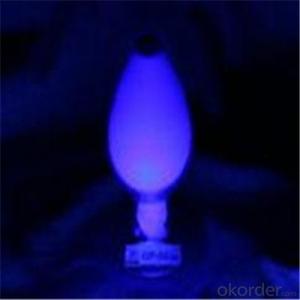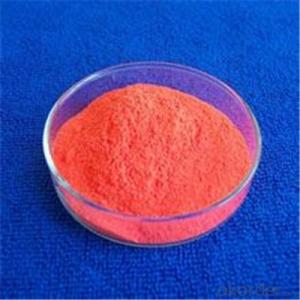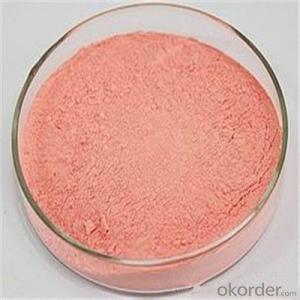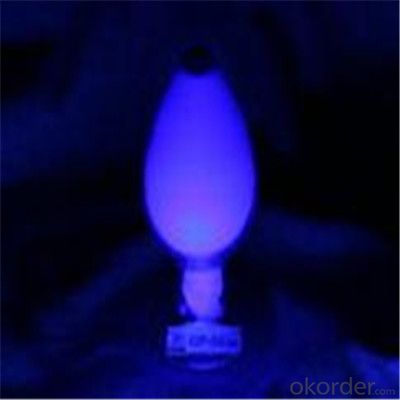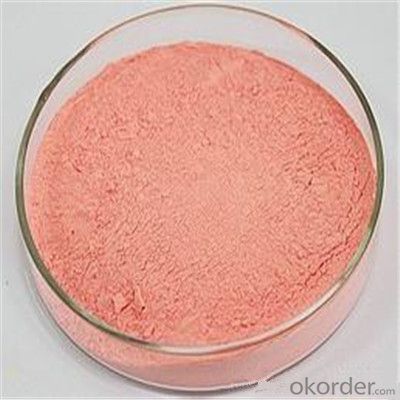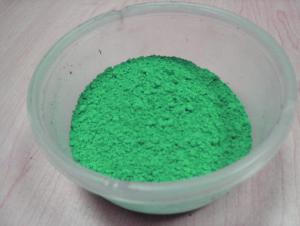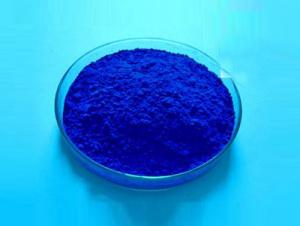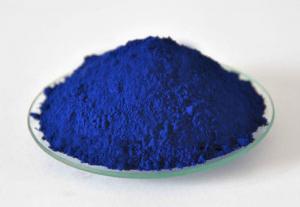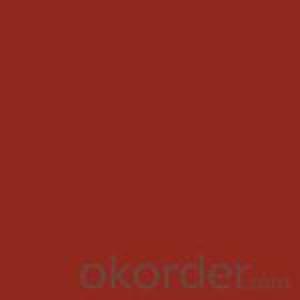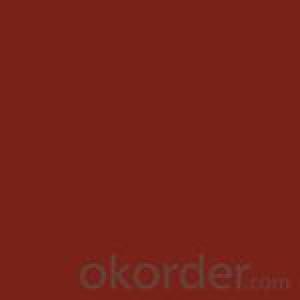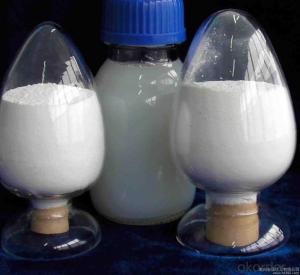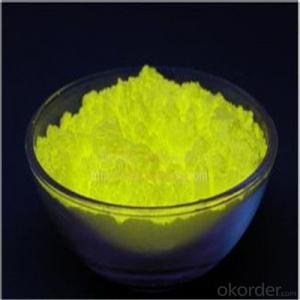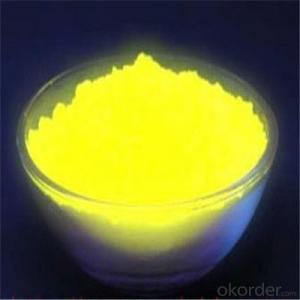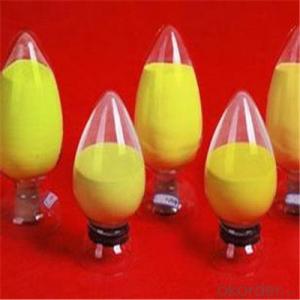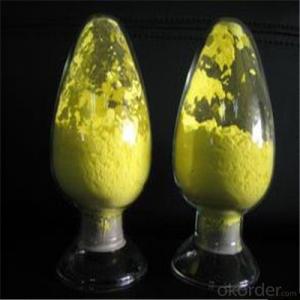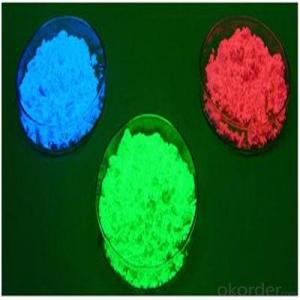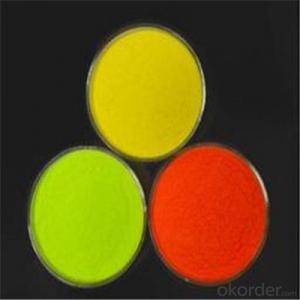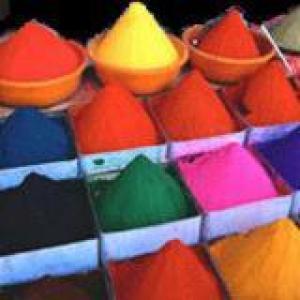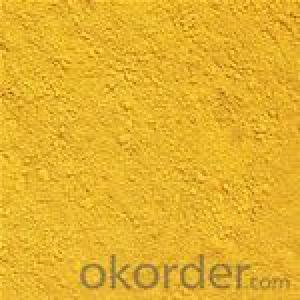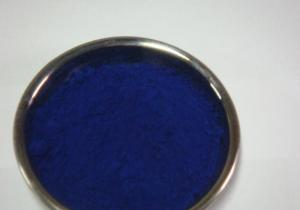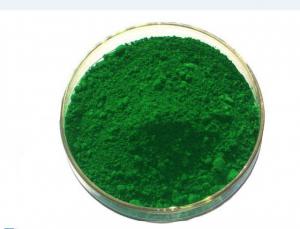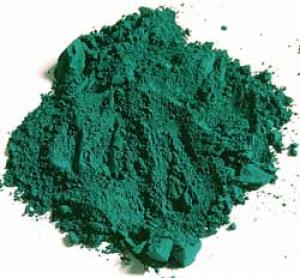Luminous Pigment, Fluorescent Powder Hot Sale with High Quality
- Loading Port:
- Shanghai
- Payment Terms:
- TT OR LC
- Min Order Qty:
- 99 kg
- Supply Capability:
- 100000 kg/month
OKorder Service Pledge
OKorder Financial Service
You Might Also Like
Description of LED Fluorescent:
Extensive usage: it applies to various LED encapsulation from cool white to warm white. The rendering index can be up to 98 with red powder.
Festures of LED Fluorescent:
Weigh phosphors and epoxy or silicone in correct concentration. Mix phosphors and silicone well and pump in vacuum chamber to eliminate air bubbles. Package some LEDs and measure. Adjust concentration and repeat until desired CIE is achieved. (Can be mixed with other phosphors).
Specifications of LED Fluorescent:
Many phosphors(Florescent Powder) tend to lose efficiency gradually by several mechanisms. The activators can undergo change of valence (usually oxidation), thecrystal lattice degrades, atoms – often the activators – diffuse through the material, the surface undergoes chemical reactions with the environment with consequent loss of efficiency or buildup of a layer absorbing either the exciting or the radiated energy, etc..
Images of LED Fluorescent:
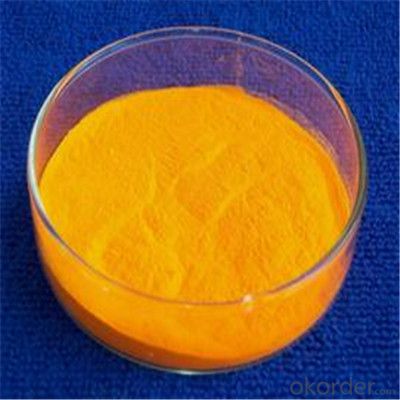
FAQ:
1.When can i get the price quotation?
We can send you the quotation within 24hours after your inquiry, including the shipping cost if you need.
2.What about payment term?
30% T/T deposit, balance against B/L copy.
Full T/T payment if quantity less than MOQ.
3. What’s your after-sales service?
One-year warranty, and 1% common accessories.
- Q: thank you very much for your help!
- Pigments In Photosynthesis
- Q: What are MAC eyeshadow pigments? Are they just like regular eyeshadow.. are they used the same way? Has anyone tried them and liked them?
- NEVER TRIED THEM HEARD GOOD THANGS THO
- Q: What is the difference between a pigmented eyeshadow and a non - pigmented one?
- pigmented eye shadow
- Q: How do you use pigments?
- you can use it in a few places such as your lips, cheeks, eyes
- Q: Compare and contrast pigment color with the color seen from a light. What is the difference between mixing pigment colors and mixing light colors?
- Pigments are chemicals that selectively absorb and reflect different spectra of light. When a surface is painted with a pigment, light hitting the surface is reflected, minus some wavelengths. This subtraction of wavelengths produces the appearance of different colors. Most paints are a blend of several chemical pigments, intended to produce a reflection of a given color. Mixing pigments is subtractive. Mixing light is additive. Let's take the primary pigments, red, blue and yellow. Red pigment is red because the chemical it is made of absorbs (subtracts) blue and yellow light that falls on it and reflects only red light to your eye. Similarly, blue pigment is blue because it absorbs red and yellow light and reflects only blue. So when you mix the three primary pigments together, you produce something that absorbs all of the light falling on it in equal amounts and reflects nothing to your eye. Thus, it appears black. In contrast, when you mix only red and blue light, there isn't any yellow in it, so the resulting light appears purple (the complement of yellow). Likewise, if you mix red and yellow light it appears orange (the complement of blue). If you mix all three colors of light together (in equal amounts), the resulting light appears white because it contains all of the colors of the spectrum. This explanation is sound, although greatly simplified. The two summaries above are not my own, nor do I claim them as mine.
- Q: 1.what is pigment2.what is it for ( whats its purpose?)3.what are other things people do with it
- Pigment is a loose powder that has highly concentrated color. They come in different finishes like matte or shimmery. You can use them as eye shadows and such, which is what most people do with them. They show up better and the metallic ones can be foiled (more vivid color and looks like metal almost) if you use them wet by putting a little bit of mixing medium or eye drops on your brush before dipping it in the pigment and applying it. They can also be used as lip colors by mixing with a clear lipgloss, or eyeliner if you use them wet or mix them with something like MAC's special eyeliner mixing medium. They also make a mascara mixing medium that can be used with pigments. Pigments really are a handy, universal product to have! Keep in mind that some pigments are not safe for use in the eye and/or lip area. If you look at MAC's website where the pigments are, you can check out the specifics about that under View Recommended Use. Also, if you use pigments wet, it's best to get a little bit of it in the jar lid, then dip the brush in it. That way you won't dampen and ruin the pigments in the jar, and moisture in the jar could promote the growth of bacteria.
- Q: a. chlorophyll ab. chlorophyll bc. chlorophyll cd. carotenoid pigments
- Chlorophylls are greenish pigments which contain a porphyrin ring. This is a stable ring-shaped molecule around which electrons are free to migrate. Because the electrons move freely, the ring has the potential to gain or lose electrons easily, and thus the potential to provide energized electrons to other molecules. This is the fundamental process by which chlorophyll captures the energy of sunlight. There are several kinds of chlorophyll, the most important being chlorophyll a. This is the molecule which makes photosynthesis possible, by passing its energized electrons on to molecules which will manufacture sugars. All plants, algae, and cyanobacteria which photosynthesize contain chlorophyll a. A second kind of chlorophyll is chlorophyll b, which occurs only in green algae and in the plants. A third form of chlorophyll which is common is (not surprisingly) called chlorophyll c, and is found only in the photosynthetic members of the Chromista as well as the dinoflagellates. The differences between the chlorophylls of these major groups was one of the first clues that they were not as closely related as previously thought. Carotenoids are usually red, orange, or yellow pigments, and include the familiar compound carotene, which gives carrots their color. These compounds are composed of two small six-carbon rings connected by a chain of carbon atoms. As a result, they do not dissolve in water, and must be attached to membranes within the cell. Carotenoids cannot transfer sunlight energy directly to the photosynthetic pathway, but must pass their absorbed energy to chlorophyll. For this reason, they are called accessory pigments. One very visible accessory pigment is fucoxanthin the brown pigment which colors kelps and other brown algae as well as the diatoms. From this I would say the answer is c.
- Q: why do plants need more than one pigment for light absorption?
- Pigments are molecules with an array of covalent bonds capable of absorbing a photon of light that has only a certain wavelength. The absorbed wavelength is only a fraction of the continuous range of wavelengths reaching the reaction center of a chloroplast. Each pigment species absorbs a different portion of the spectrum. So most photosynthesis works in combinations of pigments to absorb a across the visible spectrum and somewhat beyond. Some pigments (accessory photosynthesis carotenoid pigments) absorb useful wavelengths to pass the energy to chlorophyll A while the Xanthophyll Cycle pigments absorb potentially harmful high energy wavelengths for dissipation. Accessory pigments provide a range of spectra collection that allowed plants to adapt successfully to environments of differing light conditions. Pigments provide coloration to signal flower or fruit maturity to pollination partners or seed dispersal partners. Anthocyanins and carotenoids perform these communication functions. Phytochrome is a pigment that absorbs one wavelength only to toggle to another shape capable of absorbing at a different wavelength. Algae and plants both use this system to inform them of the time of year so they can synchronize with the best season in their habitat for reproduction efforts to succeed. Plants use phytochrome to regulate the photoperiod of flowering or seed germination.
- Q: I was intrested in buying some pigments on ebay but they dont say the name they just say these nubers #68 #69 #93 do u no what pigment name they are u could serch it that might help thank you
- MAC pigments actually have the name listed on the bottom. If the pigments on OKorder do not, you are more than likely looking at fakes.
- Q: is it the ink on regular printers?
- Some printers use only pigmented ink. Others use dye based and then some use a combination of both. Dye based ink is basically water based with a dye added to it. Pigmented ink has a solvent base with dye added. Pigment ink and dye based ink have both advantages and disadvantages. Dye based ink have better colors but pigment are more water and fade resistant. Dye based inks are therefore better for photos. I have a printer that has 4 dye based inks and a black pigment ink. Mine uses the dye based black and colours for pictures and the pigmented black is used for text. So the answer is yes. Pigmented ink is used in some regular printers.
Send your message to us
Luminous Pigment, Fluorescent Powder Hot Sale with High Quality
- Loading Port:
- Shanghai
- Payment Terms:
- TT OR LC
- Min Order Qty:
- 99 kg
- Supply Capability:
- 100000 kg/month
OKorder Service Pledge
OKorder Financial Service
Similar products
Hot products
Hot Searches
Related keywords
